728x90
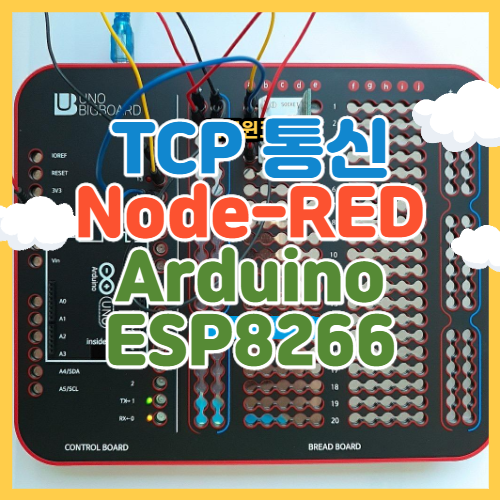
Arduino ESP8266
아두이노와 ESP8266을 이용하여 와이파이 TCP 통신을 구현합니다.
Node-RED 데이터 송수신을 구현합니다.
먼저 아두이노 스케치에서 프로그래밍을 진행합니다.
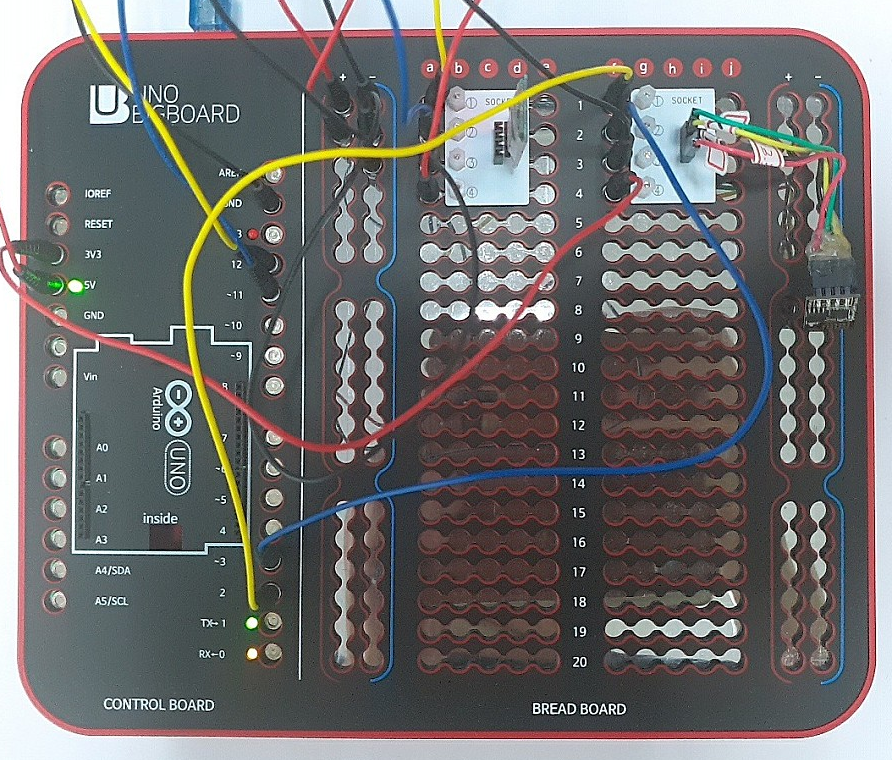
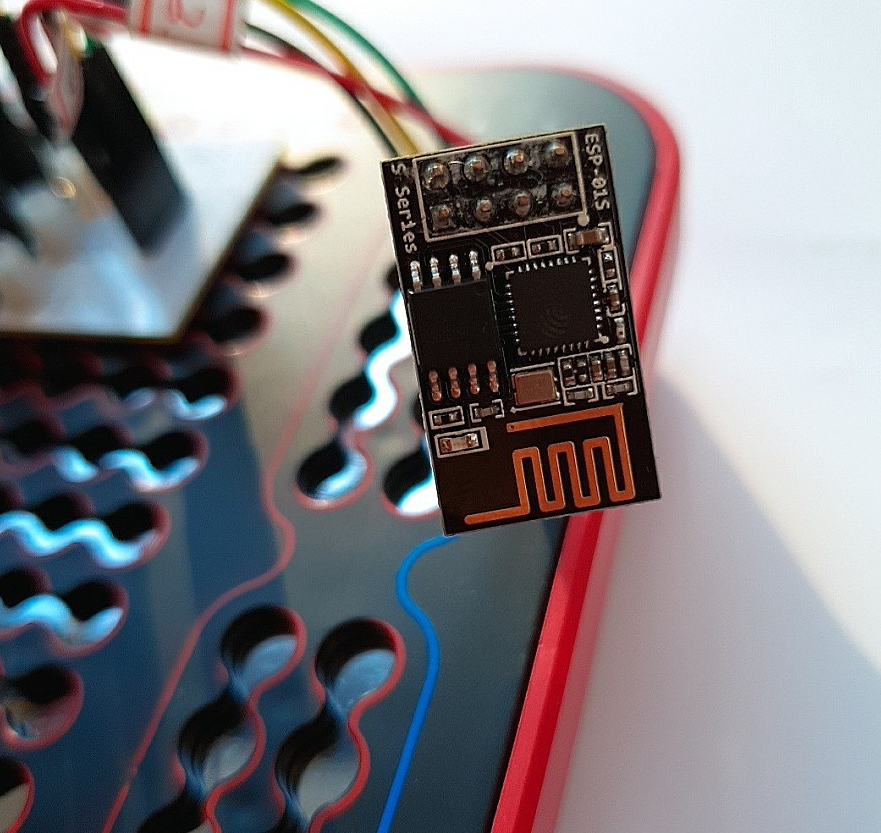
SoftwareSerial을 이용하여 ESP8266과 시리얼 통신 오브젝트를 생성합니다.
#define RXPIN 3
#define TXPIN 2
SoftwareSerial esp8266Serial(RXPIN,TXPIN);
// Pin 2 & 3 of Arduino as RX and TX. Connect TX and RX of ESP8266 respectively.ESP8266 AT COMMAND 전송 문자열 과 결과값 디버그 출력합니다.
String esp8266Data(String command, const int timeout, boolean debug)
{
if (debug)
{
Serial.print("CMD: ");
Serial.println(command);
}
String response = "";
esp8266Serial.print(command);
long int time = millis();
while ( (time + timeout) > millis())
{
while (esp8266Serial.available())
{
char c = esp8266Serial.read();
response += c;
}
}
if (debug)
{
Serial.print(response);
}
return response;
}
setup 함수에서 esp8266 초기화합니다.
그리고 tcp 소켓 8888 열어 tcp 데이터를 수신할 수 있게 설정합니다.
esp8266Serial.begin(9600);
esp8266Data("AT+RST\r\n", 5000, DEBUG); // Reset the ESP8266
esp8266Data("AT+CWMODE=1\r\n", 5000, DEBUG); //Set station mode Operation
esp8266Data("AT+CWJAP=\"ZEROWIN\",\"zzzzzzzz\"\r\n", 5000, DEBUG);//Enter your WiFi network's SSID and Password.
esp8266Data("AT+CIFSR\r\n", 5000, DEBUG);//You will get the IP Address of the ESP8266 from this command.
esp8266Data("AT+CIPMUX=1\r\n", 5000, DEBUG);
esp8266Data("AT+CIPSERVER=1,8888\r\n", 5000, DEBUG);Node-RED로 전송할 tcp 소켓을 생성합니다.
void OpenSession()
{
// esp8266Data("AT+CIPSTART=\"UDP\",\"192.168.0.3\",50000\r\n", 5000, DEBUG);
esp8266Data("AT+CIPSTART=0, \"TCP\",\"192.168.0.3\",60000\r\n", 5000, DEBUG);
bConnected = true;
return;
}
void CloseSession()
{
esp8266Serial.println("AT+CIPCLOSE=0");
return;
}
loop 함수 안에서 Node-RED 로 데이터를 전송합니다.
void loop(void)
{
sprintf(sendData, "VALUE, %d, %d", cdcValue, waterValue);
SendToClient(sendData);
}
String readStr, writeStr;
void SendToClient(String s)
{
writeStr = s;
//Serial.println("\nAT+CIPSEND=" + String(writeStr.length() + 2));
//delay(100);
esp8266Serial.println("AT+CIPSEND=0," + String(writeStr.length() + 2));
// Serial.print(millis()); Serial.print("= ");
String result = "";
char ch = 0x00;
while(ch != 0x00)
{
if(0 < esp8266Serial.available()) {
ch = esp8266Serial.read();
result += ch;
}
delay(1);
};
Serial.print("result=");
Serial.println(result);
//readStr = esp8266Serial.readString();
//Serial.print(readStr);
delay(10);
//Serial.println("\n" + writeStr +"\n\r");
esp8266Serial.println(writeStr);
return;
}
TCP 데이터를 수신합니다.
String result2 = "";
while(0 < esp8266Serial.available()) {
char ch = esp8266Serial.read();
result2 += ch;
}
Serial.print("result2=");
Serial.println(result2);
int firstListItem = result2.indexOf("link is not");
if(firstListItem != -1) {
CloseSession();
delay(100);
OpenSession();
}
else {
// +IPD,12:1023,681,310
firstListItem = result2.indexOf("+IPD");
if(firstListItem != -1) {
firstListItem += 5;
int secondListItem = result2.substring(firstListItem).indexOf(":");
if(secondListItem != -1) {
String dataLen = result2.substring(firstListItem, firstListItem + secondListItem);
int len = dataLen.toInt();
Serial.print("dataLen=");
Serial.println(dataLen);
String data = result2.substring(firstListItem + secondListItem + 1,
firstListItem + secondListItem + 1 + len);
Serial.print("data=");
Serial.println(data);
}
}
}시리얼모니터 디버깅 화면
esp8266 설정시
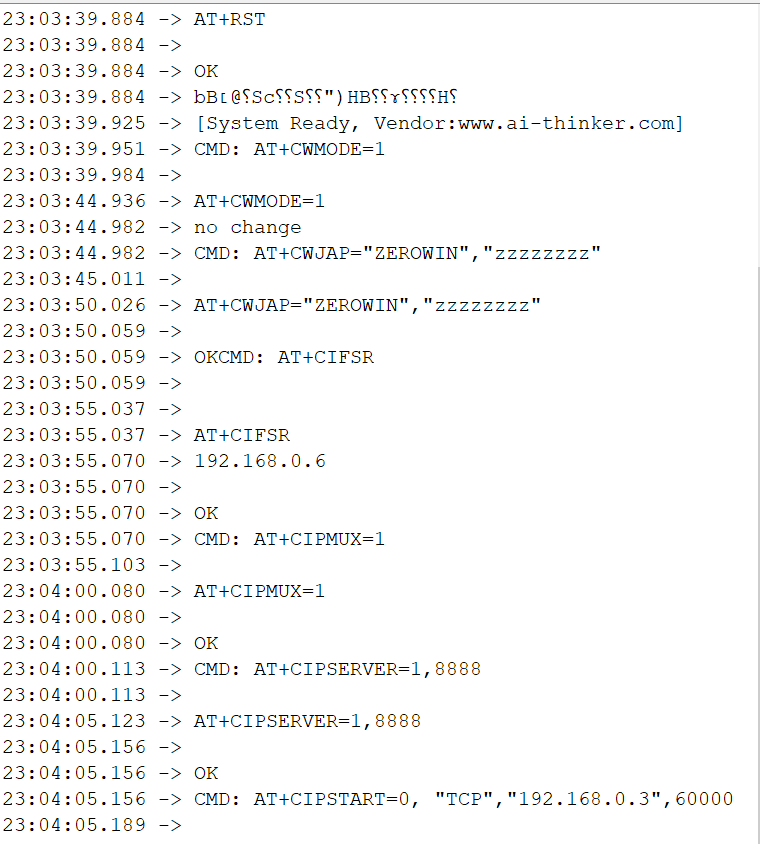
Node-RED
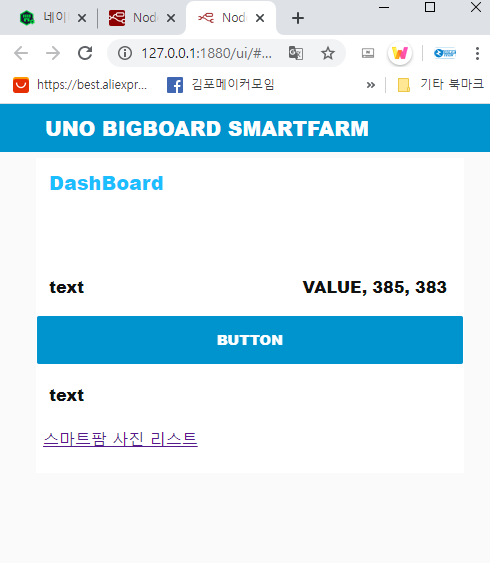
버튼을 누르면 아두이노로 데이터를 송신합니다.

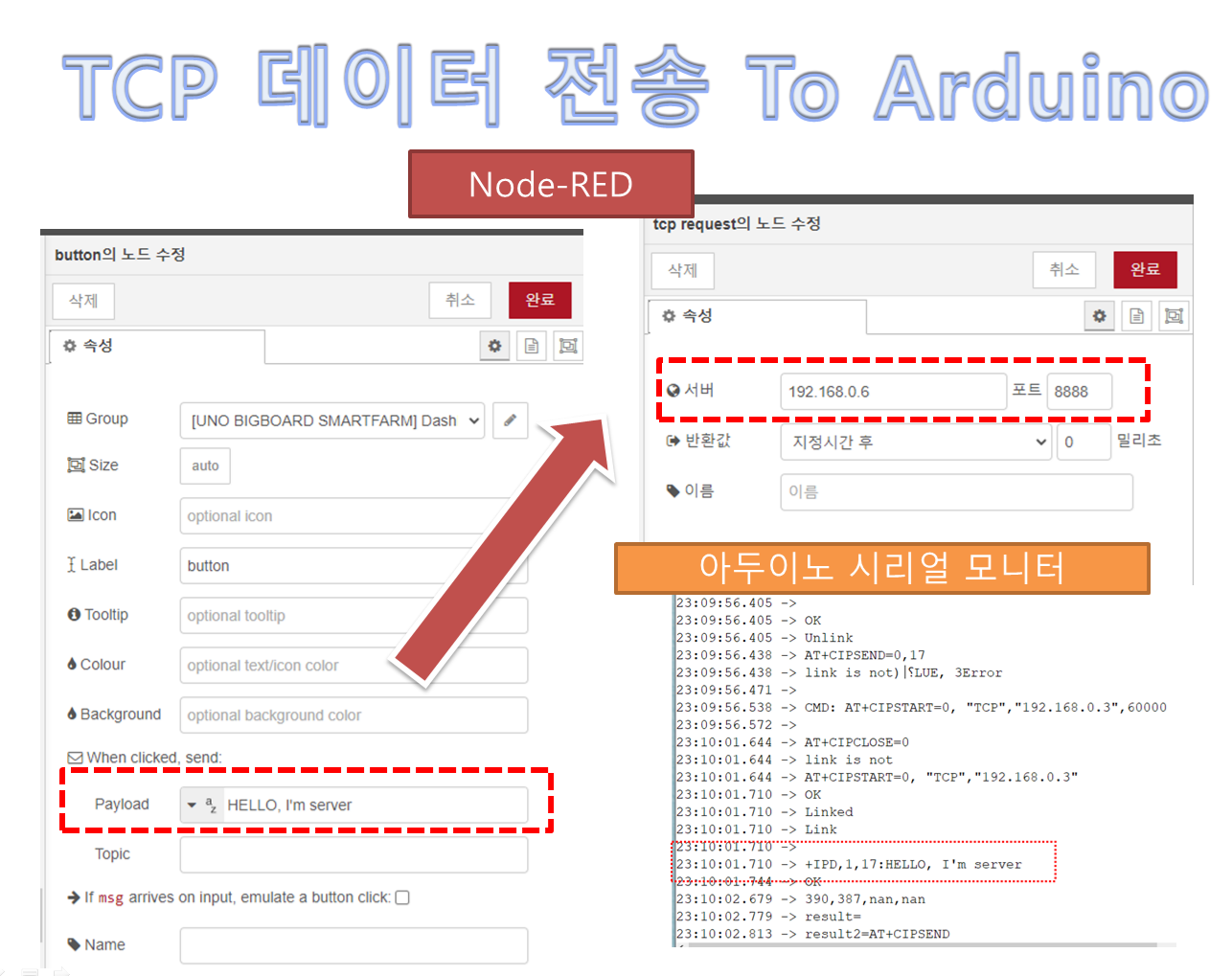
아두이노로부터 TCP 데이터를 수신합니다.
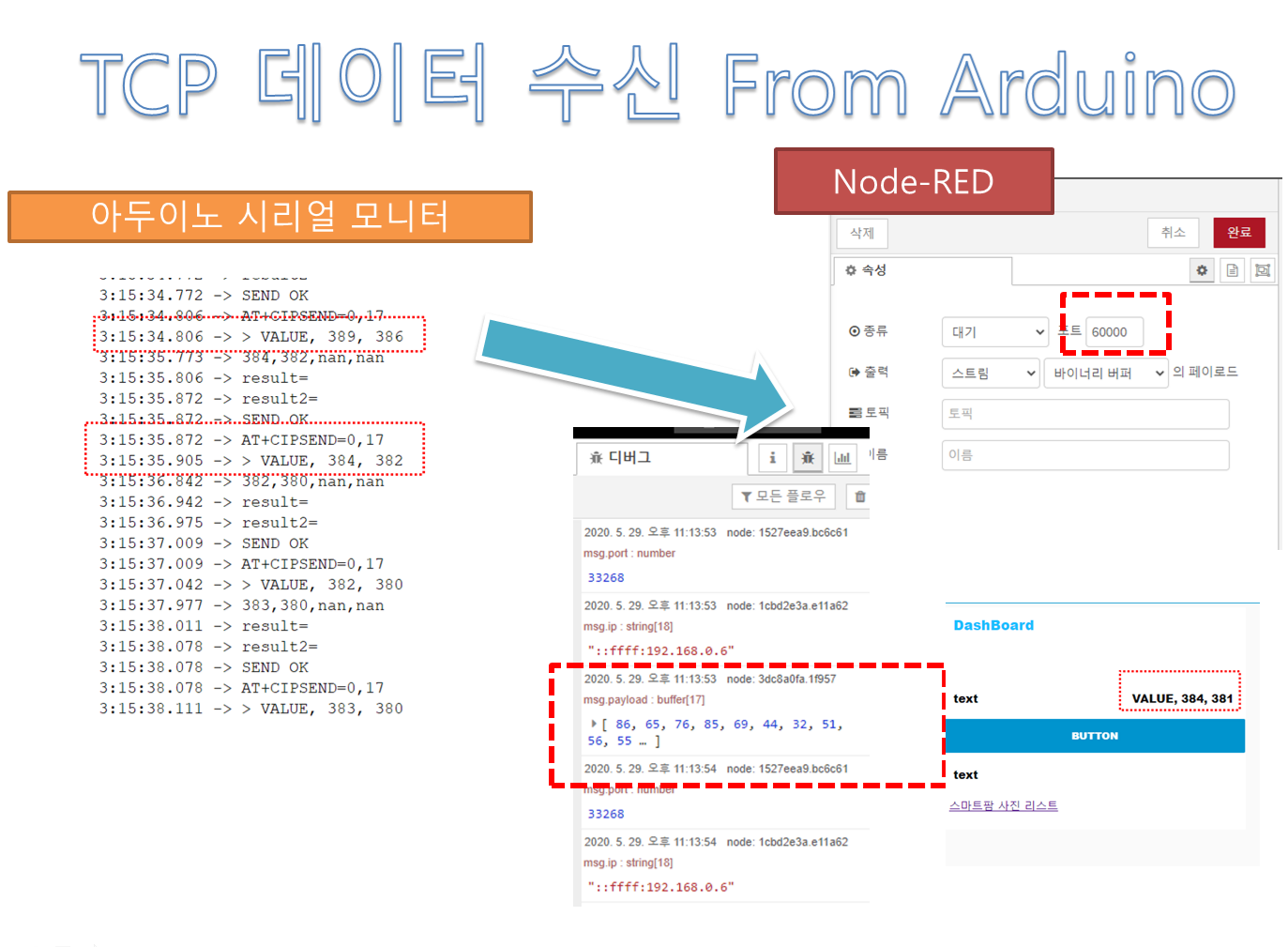
샘플 동영상
'Node-RED 우노빅보드 스마트팜 > 우노빅보드와 Node-RED 연동' 카테고리의 다른 글
| ESP8266 ESP-01 최신 펌웨어 업데이트 (0) | 2020.06.03 |
|---|---|
| 우노빅보드 스마트팜 동작 테스트 (0) | 2020.05.31 |
| Node-Red 대쉬보드로 UDP 데이터 송신 (0) | 2020.05.28 |
| ESP8266 연결 & 이더넷 동작 테스트 (1) | 2020.05.27 |
| NGINX webserver 설치 on Windows (1) | 2020.05.23 |



